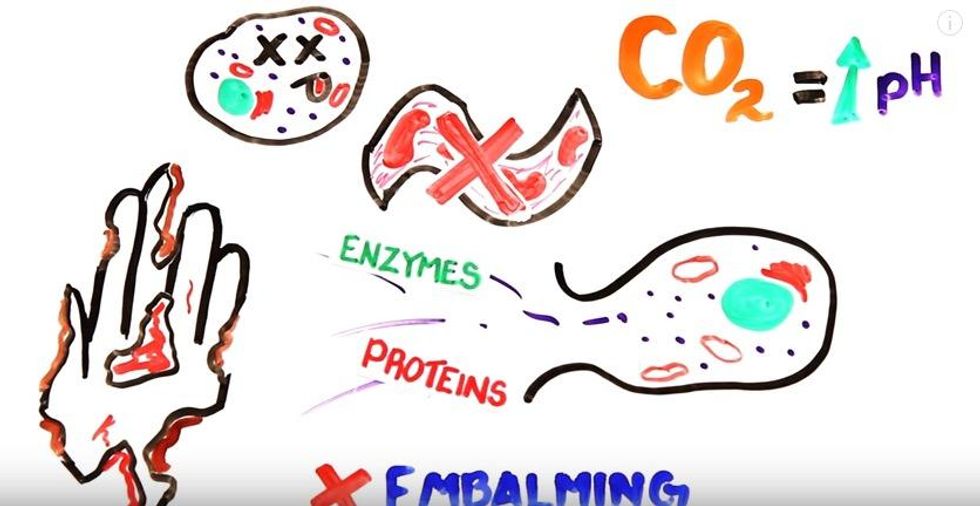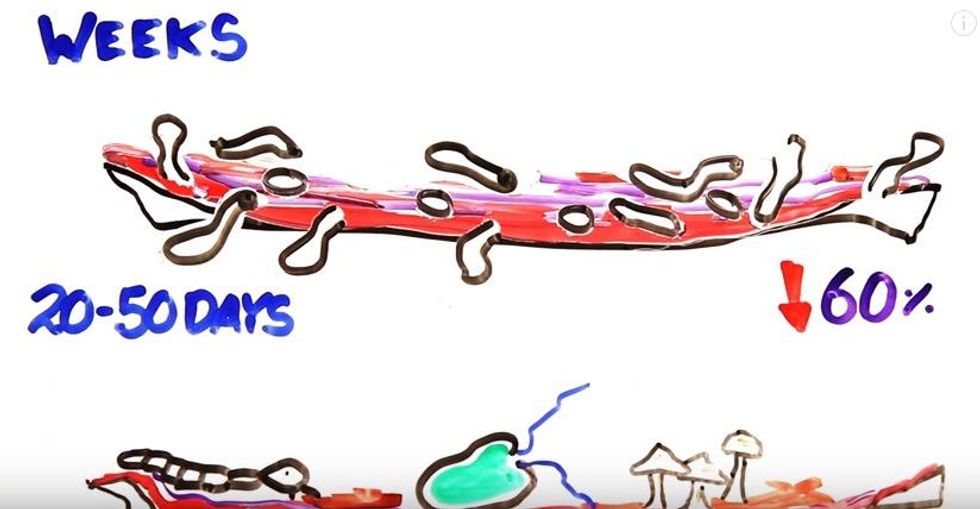News
Bethan McKernan
Mar 08, 2016

Screenshot via ASAP Science/YouTube
Even the most steadfast believers sometimes wonder where our super-egos end up once we shuffle off this mortal coil.
As for your mortal remains, we have evidence to look at. But how much do you really know about the biological processes that occur in the seconds, hours and days after your lights go out for the last time?
The cool kids over at ASAP Science have put together a cool video breaking down how you break down.
First, the last oxygen in your system leaves the body, causing a surge in brain activity as neurons lose function.
Then your hormones shut down and the body's remaining ATP energy is used up. Once that's gone, muscles, including sphincters, relax.
Since your heart has stopped pumping blood around the body, lighter skin-toned people appear pale, and blood pools because of gravity.
After a few hours, this is going to make you look pretty discoloured.
Between 3-6 hours in, cell deterioation leaks calcium into muscle cells, which binds with protein, contracting your muscle cells and causing rigor mortis.
As cells die, your body starts to decay. No blood flow and the extra carbon dioxide makes the pH of cell tissue rise, weakening cell membranes and causing them to burst. The released proteins and enzymes further break down surrounding tissue.
External microorganisms - around 100 trillion of them - help to further break down your body in the process known as putrefaction.
Anerobic bacteria in your gut begin to eat through your intestines and abdominal organs.
The break down of amino acids attracts insects like mites, carrion beatles and blowflies which lay eggs in the rotting tissue.
The larvae and maggots feed off you until they're fully grown.
After a few weeks, maggots have probably eaten about 60 per cent of your tissues, creating holes that let fluids and gasses escape.
20-50 days in, it's time for dry decay: fermentation attracts protazoa, beetles and fungi. This can last for a year.
Over the years, plants and animals will feed off what's left of you, including skeletal remains.
If left to natural processes, every constituent molecule that used to be you will be reused and recycled.
Check out the stop motion explainer below:
More: There is a harrowing database of the last words uttered by people on death row
More: Are people really more outraged by the death of a lion than a human in Calais?
Top 100
The Conversation (0)





















